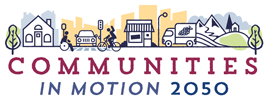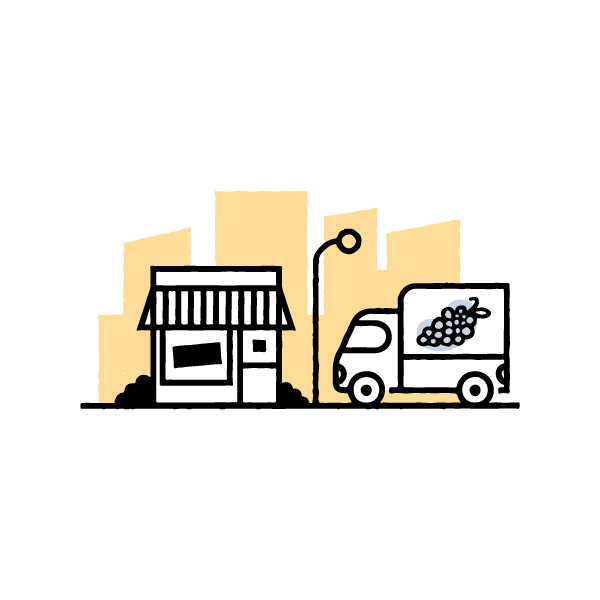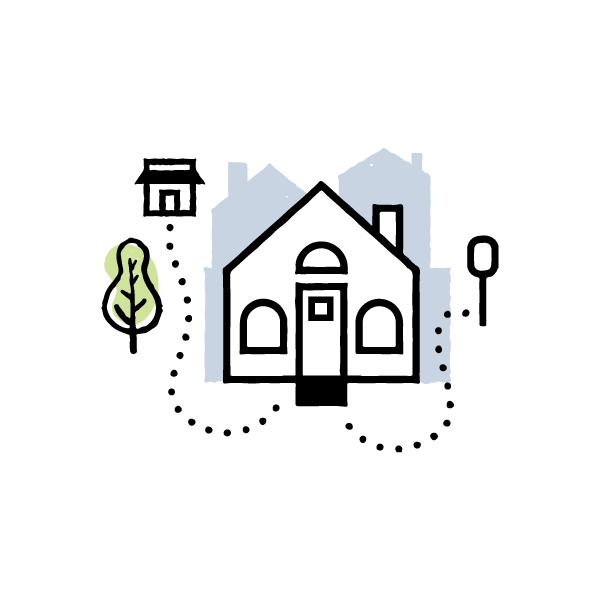
Pop Quiz! Which of these relies on roadways?
A. Personal cars and trucks
B. Buses
C. Cyclists and pedestrians
D. Freight trucks
E. Carpools and vanpools
F. Home deliveries
G. All of the above
If you answered, “G. All of the above,” you are correct. Roadways are the backbone of our transportation system. Even if you have never driven a car, chances are you rely on the road system every day.
Communities in Motion 2050 focuses on multiple transportation system components, including not only roadways, but also public transportation, freight, and active transportation—and how they integrate to comprise a complete transportation network. As a key component of the Treasure Valley’s transportation system, roadways address all four CIM 2050 goal areas:
How much traffic is there?
In Ada and Canyon Counties, most traffic is generated by private vehicles. According to the American Community Survey, over 85% of residents in the area travel to work by auto, and a majority of them (78%) do so by themselves. That’s a lot of cars on the road.
Looking at it another way, over 1.8 million passenger vehicle trips were taken on roadways in Ada and Canyon Counties on an average weekday in 2021. That number is forecasted to increase to almost 3 million by 2050.
All those vehicles lead to congestion: too many vehicles on a portion of roadway at a given time. Congestion can be recurring predictable “rush hour” traffic or non-recurring less predictable delays caused by road construction, traffic crashes, inclement weather, special events, or emergencies.
What are we doing about it?
While congestion is impossible to eliminate, we are using more and better tools to evaluate and manage congestion, make investments in smart technology and provide safe and complete roads and streets for all users. Some investments, such as a wider road, are easy to spot, while others are less visible but can have equal, or even greater, impact. Some less visible improvements include improved signal timing, providing incentives for employees to telework or work alternate schedules, increasing the frequency of bus service, or redesigning loading zones to keep parked vehicles out of travel lanes.
Communities in Motion 2050 includes $11.1 billion in transportation investments in Ada and Canyon Counties to the year 2050. These investments range from road widening and new roads, to technology and maintenance, to increased public transportation and more pathways and sidewalks.
What does the future hold?
New technologies and innovations will impact how we live, travel, and build the cities of tomorrow. Some of these technologies are already on the road:
- Electric vehicles (EVs):
- Fully electric and plug-in hybrid models are available; can charge at home or at public charging stations.
- About 6,000 currently in Idaho; anticipated to increase to 150,000 by 2030.
- Provide environmental and economic benefits but will require investments in charging stations and a pivot from the current reliance on fuel taxes to fund transportation infrastructure.
- Connected and Autonomous Vehicles:
- Receive and send information to a driver, surrounding vehicles, roadside infrastructure, cellphones, and other devices.
- Many automated features are currently available, including automatic emergency braking, parking and lane assist, adaptive cruise control, lane departure and blind spot warnings, and more.
- Provide safety, reliability, and efficiency benefits; however, infrastructure, legal, and regulatory hurdles exist.





